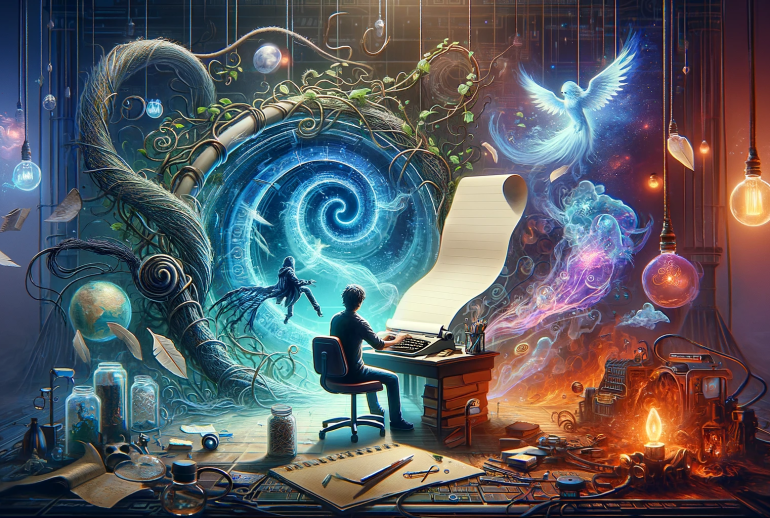World-building is an art of creation, and at its core lies the crafting of belief systems, mythologies, and religions that breathe life into the fictional realms you construct. These spiritual and philosophical underpinnings not only add depth to your world but also serve as sources of conflict, motivation, and cultural identity. In this exploration, we’ll delve into the art of building diverse and compelling belief systems, mythologies, and religions that infuse your world with soul and complexity.
The Significance of Belief Systems
Before we dive into the intricate process of crafting belief systems, it’s essential to understand their significance in world-building:
Cultural Identity: Belief systems define the cultural identity of your world’s inhabitants. They shape their values, morals, and norms, affecting every aspect of their lives.
Conflict and Harmony: Belief systems can be sources of both conflict and harmony within your narrative. Characters may clash over differing beliefs or find common ground through shared spirituality.
Motivation and Purpose: Characters’ beliefs often drive their motivations and sense of purpose. Understanding these beliefs is key to creating well-rounded characters.
Building Diverse Belief Systems
Creating a rich tapestry of belief systems requires thoughtful consideration of various elements. Here’s how to build diverse and compelling belief systems:
Core Tenets: Define the core tenets of each belief system. What are the fundamental beliefs, values, and principles that guide its followers? These tenets should resonate with the culture they belong to.
Deities and Spirits: Introduce deities, spirits, or divine beings that are central to each belief system. Consider their roles, domains, and relationships with mortals.
Rituals and Ceremonies: Explore the rituals, ceremonies, and practices associated with each belief system. These can include rites of passage, festivals, and daily devotions.
Sacred Texts: Craft sacred texts or scriptures that serve as the foundational teachings of each belief system. These texts can provide moral guidance and stories of origin.
Symbols and Icons: Design symbols, icons, or artifacts that represent each belief system. These visual cues can be powerful symbols of faith.
Conflict and Cooperation
Belief systems often intersect and interact within a world, leading to conflict or cooperation. Consider these dynamics:
Religious Conflict: Characters may find themselves embroiled in religious conflicts, whether over competing deities, differing interpretations of sacred texts, or clashes of moral values.
Interfaith Dialogue: Explore moments of interfaith dialogue and cooperation, where characters from different belief systems come together to solve common problems or bridge cultural gaps.
Religious Conversion: Characters may undergo religious conversions, adopting new beliefs and leaving behind their old faiths. These transitions can be deeply personal and transformative.
Religious Authorities: Define the religious authorities within each belief system, whether they are priests, shamans, or spiritual leaders. These figures can wield significant influence and power.
Mythologies and Legends
Mythologies and legends are the stories that breathe life into belief systems. They provide origin stories, moral lessons, and narratives that shape the worldview of your world’s inhabitants:
Creation Myths: Craft creation myths that explain how the world and its inhabitants came into being. These myths often reflect the values and cosmology of a belief system.
Heroes and Heroines: Introduce legendary heroes and heroines from your world’s myths. These figures can serve as role models, embodying the virtues and ideals of their cultures.
Epic Tales: Develop epic tales that explore heroic quests, divine interventions, or battles between cosmic forces. These stories can be sources of inspiration or allegory.
Moral Parables: Use myths and legends to convey moral lessons and cultural values. These parables can be passed down through generations as guiding principles.
Incorporating Belief Systems into Characters
Belief systems have a profound impact on characters’ identities and motivations. Here’s how to incorporate them:
Character Beliefs: Define the beliefs of your characters and how they align or conflict with the dominant belief systems of their culture.
Spiritual Journeys: Characters may embark on spiritual journeys, seeking enlightenment, redemption, or a deeper connection with their beliefs.
Religious Orders: Create religious orders, sects, or organizations that characters may join or clash with. These groups can be sources of conflict or camaraderie.
Doubt and Faith: Characters may grapple with doubt and faith, questioning their beliefs or experiencing crises of faith. These struggles can be powerful character arcs.
The Art of Subversion and Innovation
To add complexity to your world, consider subverting or innovating traditional belief systems:
Heresy and Reform: Introduce heretical movements or reformist ideologies within belief systems. Characters may challenge established norms, sparking change.
Syncretism: Explore syncretic belief systems that blend elements of different faiths. These syncretic faiths can bridge cultural divides or create unique belief systems.
Cults and Sects: Craft cults or sects that deviate from mainstream beliefs. These groups can be sources of mystery, danger, or alternative worldviews.
In Conclusion
Belief systems, mythologies, and religions are the soul of your world-building, infusing your fictional realms with depth, conflict, and cultural identity. By crafting diverse belief systems, exploring their interactions, and incorporating them into character development, you create a living, breathing world where spirituality and philosophy are integral aspects of life. As you embark on the journey of world-building, remember that belief systems are not static; they evolve, adapt, and leave an indelible mark on the characters and cultures that inhabit your wondrous creations.



